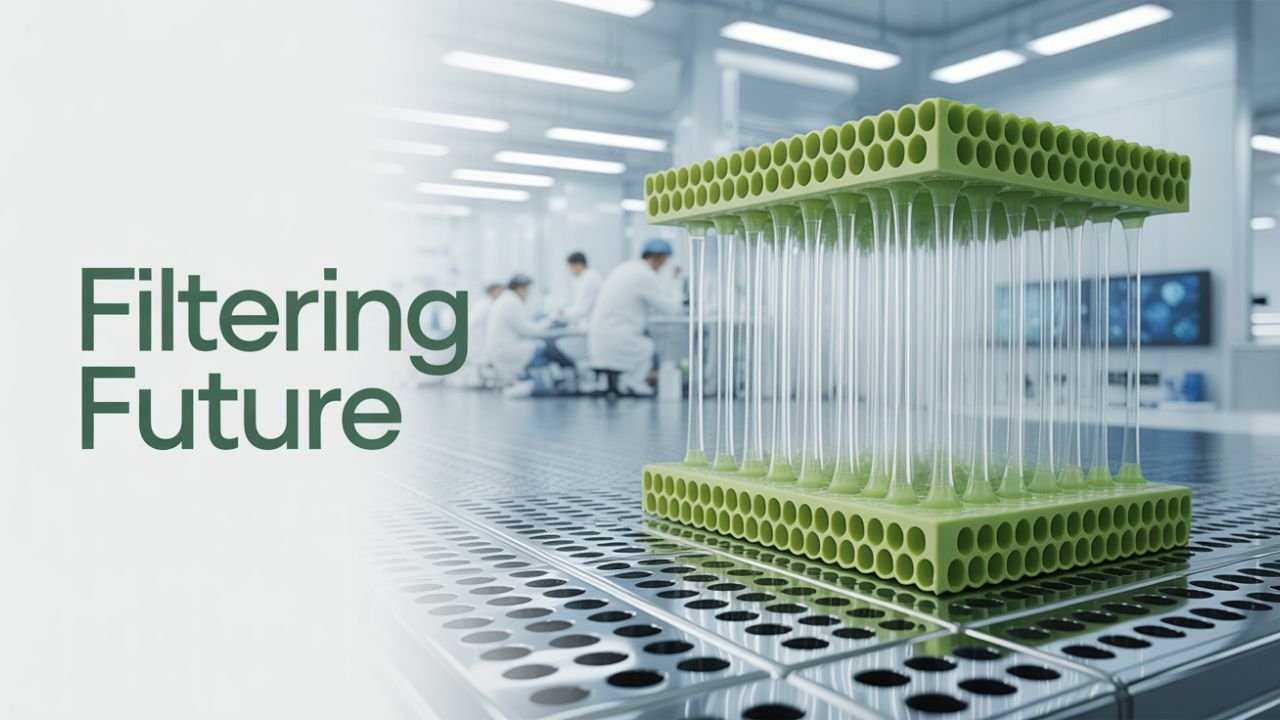The Role of Bio-Inspired Materials in Next-Generation Membrane Development: Global water use has increased more than sixfold over the past 100 years. Today, about 10% of the world’s population faces severe water stress, and it is estimated that by 2050, more than half of the population will face water stress at various levels. Desalination of sea and brackish water and wastewater reuse are emerging as effective solutions to meet this challenge. Global desalination capacity currently stands at more than 100 million cubic meters per day, of which about 57% is derived from sea water and 20% from brackish water.
Over the past four decades, energy consumption of seawater reverse osmosis (SWRO) has decreased from 8 kWh/m³ to about 2 kWh/m³. This progress has been made possible by improvements in advanced membrane materials, energy recovery devices, and pump technology. Although conventional RO technologies are still dominant, new, more efficient and sustainable technologies are needed to meet future demand.
Concept of Ultrapermeable Membrane (UPM)
In recent years, scientists have developed high permeability membranes or Ultrapermeable membranes (UPM), which are based on advanced materials such as graphene, graphene oxide, carbon nanotubes, conjugated polymers and nanochannels. These membranes offer greater water flow capacity and may be able to reduce energy consumption. For example, graphene oxide membranes have shown permeability of up to 60 L/m²/h/bar.
However, high permeability does not always lead to significant energy savings. As water flow increases, problems such as membrane fouling and concentration polarization (CP) also increase, affecting the overall efficiency of the system. Therefore, high permeability alone is not enough—module design and system optimization are extremely important.
Challenges and Solutions in System Design
The biggest challenge in UPM systems is how to control concentration polarization along with high water flow. This requires increasing mass transfer, but without excessive energy loss.
In conventional membrane modules, cross-flow velocity is increased to enhance mass transfer, but this increases pumping energy consumption several times. This has led researchers to change the feed spacer design. Various studies have shown that advanced spacer designs—such as multi-layer spacers or column node spacers—can increase mass transfer by 20-30%.
Inspiration from Nature: Learning from the V-shaped flight of birds
Nature gives us amazing examples of energy efficiency. Migratory birds fly in a ‘V’ shape, which saves 11-14% of energy during flock flight. Adopting the same principle, researchers have designed V-shaped feed spacers. This design establishes a better balance between fluid flow and mass transfer, thereby reducing concentration polarization and saving energy.
The newly developed V-shaped feed spacer has shown that it can increase mass transfer by almost two times compared to conventional modules, while the pressure loss increases by only 21%. This technology can prove to be a revolutionary change for RO based desalination systems.
Future direction: Optimization and automation
Developing next-generation UPM systems requires not only better materials but also intelligent design and optimization frameworks. Today, researchers are using artificial intelligence (AI) and genetic algorithms to design modules that can produce maximum water with minimum energy consumption.
In the future, when these systems are implemented on a large scale, they can mitigate the global water crisis to a great extent. This will not only increase the availability of potable water but also provide a sustainable solution for the industrial and agricultural sectors.
Conclusion
The solution to the water crisis lies not only in finding new water sources but in better management of existing sources and development of efficient technologies. UPM systems with bio-inspired design are a strong step in this direction. These systems offer high efficiency, low energy consumption and long-term sustainability.
Water purification of the future is no longer just a matter of science and technology but has become an excellent example of learning from nature and adapting it into modern technology.
